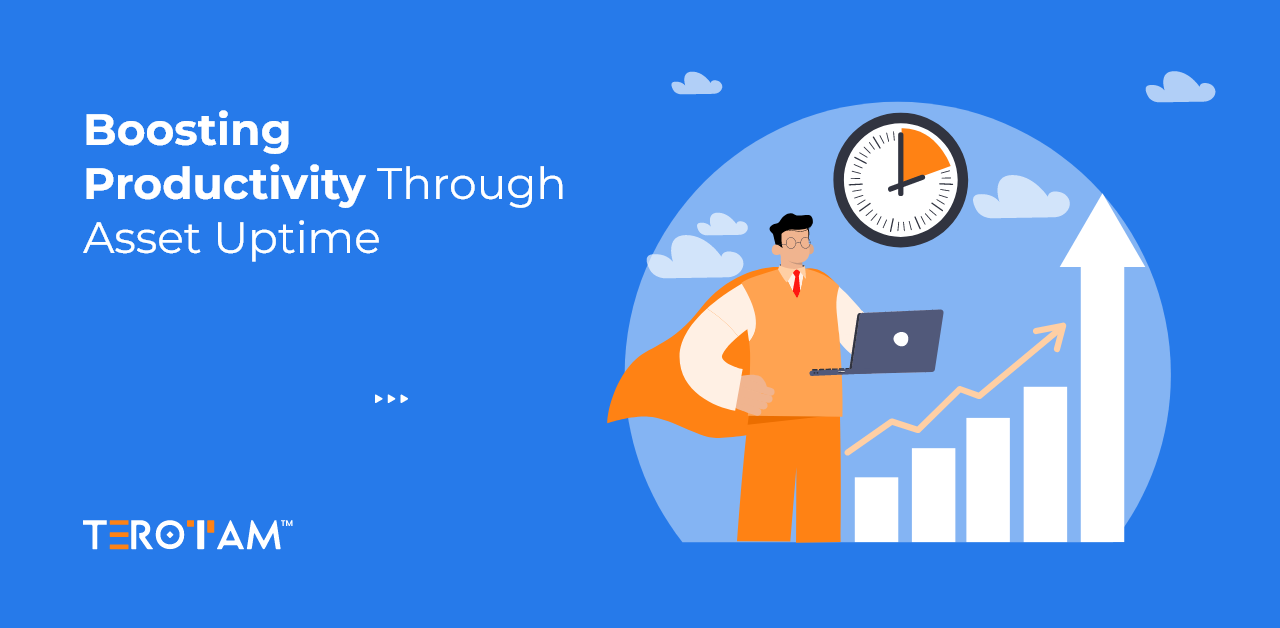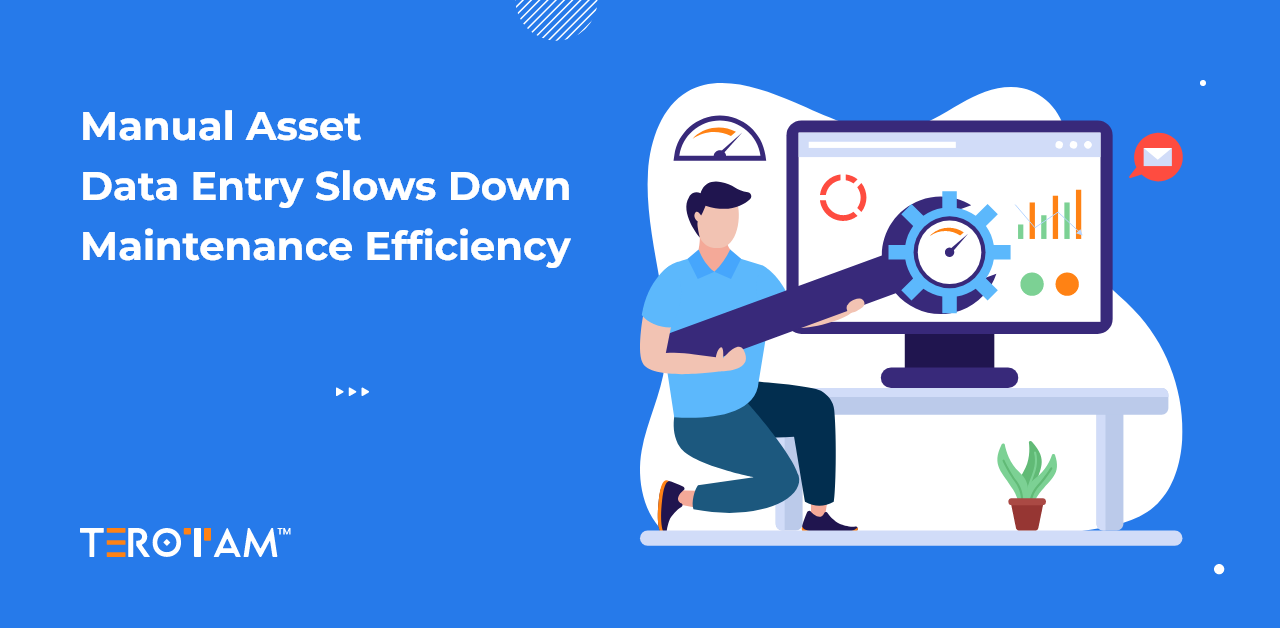Asset Performance Management isn’t just a buzzword; it’s a strategic approach that businesses across industries are leveraging for improved operational efficiency. In a world where maximizing asset reliability and optimizing performance is paramount, APM emerges as the beacon of solution. From predictive maintenance to data-driven insights, it encompasses a range of practices that keep industries competitive and resilient.
In this blog post, we’ll dive deep into this productive concept, exploring its benefits, key components, real-world applications, and the role it plays in shaping the future of asset management. Join us to unravel the Importance, complexities, and possibilities of asset performance management software systems in the modern business landscape.
What is Asset Performance Management?
Asset Performance Management is the strategic approach of optimizing the performance and reliability of assets throughout their lifecycle. In today’s industries, assets come in various forms: physical equipment, digital systems, and even human resources. This concept of asset management performance encompasses all these aspects and aims to align them with the organization’s objectives. It plays a pivotal role in ensuring that assets operate at their peak efficiency, reducing downtime, and improving overall productivity.
Key Concepts of Asset Performance Management

Understanding Assets
Assets go through different stages in their lifecycle, from acquisition to operation and maintenance, and ultimately ending in disposal. Understanding these stages is crucial for effective APM implementation. Additionally, assets can fail in various ways – some failures are predictable, like wear and tear, while others are unpredictable and might result from unforeseen circumstances.
Performance Metrics and KPIs
To measure the success of an asset performance management strategy, organizations rely on key performance indicators (KPIs). These metrics provide valuable insights into asset health, utilization, and overall efficiency. Different industries have their own sets of KPIs tailored to their unique needs. Aligning these KPIs with business goals helps organizations track progress and make informed decisions.
Reliability and Availability
Asset reliability and availability are critical aspects of this system. Reliability refers to the ability of an asset to perform its intended function without failure over a specific period. On the other hand, availability represents the percentage of time an asset is operational. Calculating metrics like Mean Time Between Failures (MTBF) and Mean Time To Repair (MTTR) helps assess and improve reliability.
6 Benefits of Implementing Asset Performance Management in Your Business
Implementing Asset Performance Management isn’t just a strategic choice; it’s a transformative decision that can reshape how businesses operate and thrive.

1. Enhanced Operational Effectiveness
Downtime is the mortal enemy of productivity in the ever-changing world of industry. Asset performance management gives businesses the tools they need to anticipate and stop asset failures before they happen. With this proactive strategy, unplanned downtime is minimal, operational disruptions are minimized, and resource allocation is optimized. Businesses may optimize their processes with this technology to run as efficiently as possible, resulting in streamlined workflows, increased throughput, and a competitive edge.
2. Enhanced Safety and Reliability
The basis on which businesses develop trust with clients and other stakeholders is reliability, which is more than simply a trendy word. Asset performance management functions as a guardian, continuously observing the performance and health of assets. It prevents catastrophic failures that could jeopardize safety and disrupt operations by seeing possible problems early on. This protects resources and workers and guarantees adherence to legal and financial requirements and regulatory norms.
3. ROI (Return on Investment) and Cost Reduction
Any effective business strategy must be based on economic sustainability. Decisions on maintenance may be made with greater knowledge thanks to APM’s capacity to foresee asset breakdowns. This enables businesses to maximize maintenance plans, reduce wasteful spending, and increase asset longevity.
As a result, maintenance expenses decrease, resulting in significant savings over time. Increased asset longevity, decreased downtime, and improved overall operational performance are all indications of the ROI from the deployment of Asset Performance Management.
4. Data-Driven Decision-Making
Data is the fuel that propels modern businesses forward. This beautiful concept of Performance of Asset management harnesses the power of data analytics and real-time monitoring to provide actionable insights into asset performance. This gives decision-makers the information needed to make informed choices about maintenance strategies, resource allocation, and asset utilization. By relying on data, organizations transition from reactive decision-making to a proactive, data-driven approach, enhancing overall operational agility.
5. Alignment with Business Goals
Performance asset management is not merely a stand-alone project; rather, it is a strategic enabler that supports more general company goals. It ensures that every activity is conducted to increase efficiency, dependability, and profitability by using key performance indicators (KPIs) that align with organizational objectives. This coordination develops a consistent strategy across departments and encourages a collaborative environment centered on attaining common goals.
6. Competitive Advantage and Customer Satisfaction
In a world where customer expectations are soaring, businesses must deliver consistent, high-quality products and services. Performance of Asset management aids in maintaining optimal asset performance, reducing the likelihood of service disruptions or product defects.
This consistency enhances customer satisfaction, bolstering brand reputation and differentiation in a crowded market. A business that can promise reliability gains an edge that resonates with customers and partners alike.
Impact of APM on Business – Case Studies and Real-World Examples
A. Manufacturing Industry:
APM Implementation in Automotive Production

In the heart of the bustling manufacturing industry, where precision and efficiency are paramount, Asset Performance Management has emerged as a game-changer. Consider a prominent automotive manufacturer that adopted this system to revolutionize its production process.
By strategically implementing predictive maintenance, the manufacturer achieved remarkable results. Equipment failures were anticipated before they occurred, enabling proactive maintenance interventions. This shift from reactive to proactive maintenance significantly reduced unplanned downtime, minimizing production disruptions and optimizing resource allocation.
Cost Savings and Efficiency Improvements:
The benefits extend beyond just smoother operations. The automotive giant experienced substantial cost savings as maintenance actions were targeted precisely, eliminating unnecessary expenses. Moreover, the enhanced efficiency resulted in increased throughput, accelerating production timelines and enhancing overall profitability.
The success of this technological system in the manufacturing realm showcases how a proactive approach can transform the manufacturing floor into a well-oiled, high-performance machine.
B. Energy Sector:
Predictive Maintenance in Wind Turbines

APM has proven its mettle in wind turbine maintenance in the dynamic energy sector, where consistent energy production is essential. Imagine a wind farm nestled on a serene hillside, harnessing the power of nature to generate electricity. A forward-thinking energy company introduced this technology to its wind turbines, leveraging real-time data and predictive analytics to monitor turbine health.
The outcome was exceptional – potential issues were detected and addressed well in advance, reducing costly downtime caused by unexpected breakdowns.
Ensuring Consistent Energy Production: With APM’s guidance, maintenance teams optimized their schedules based on data-driven insights, maximizing turbine uptime and minimizing revenue losses. This approach not only ensured consistent energy production but also extended the lifespan of the turbines.
By implementing this, the energy company embraced a future-focused strategy that bolstered sustainability, minimized operational risks, and maintained a steady clean energy supply.
C. Transportation Field:
APM for Optimizing Aircraft Maintenance

The transportation industry thrives on efficiency and safety, making APM a natural fit for optimizing aircraft maintenance. Envision a bustling airport where flights take off and land like clockwork. A major airline company introduced this into its aircraft maintenance practices.
The airline identified potential mechanical issues and component wear well in advance by utilizing predictive analytics. This preemptive approach to maintenance enhanced not only passenger safety but also operational reliability.
Enhancing Airline Safety and Customer Satisfaction: The benefits extended to the passenger experience. With this system in place, flight delays due to unexpected maintenance issues decreased significantly.
Passengers enjoyed a smoother travel experience, increasing customer satisfaction and improving brand loyalty. The airline’s operational efficiency improved, resulting in cost savings from reduced downtime and optimized maintenance efforts.
3 Pillar For Implementation of Asset Performance Management System
1. Data Management and Integration
Managing and integrating large volumes of data can be overwhelming. Data quality and integrity are paramount, and asset performance management software integration with existing systems like Computerized Maintenance Management Systems (CMMS) or Enterprise Asset Management (EAM) solutions is crucial.
2. Skill and Knowledge Gap
Implementing APM requires skilled personnel capable of interpreting data and making informed decisions. Upskilling existing staff and fostering cross-departmental collaboration ensures a smooth transition to the new strategy.
3. Change Management and Cultural Shift
Introducing the APM software system often faces resistance from employees accustomed to traditional practices. Effective change management and transparent communication about this concept’s benefits can help overcome these challenges.
Future Trends in Asset Performance Management
Combining AI and IoT:
The combination of artificial intelligence (AI) and the Internet of Things (IoT) will determine the direction of APM in the future. Predictions will be improved by AI-driven algorithms, and real-time data will be provided by IoT devices for more precise evaluations.
Simulation and Digital Twins:
Digital twins, or virtual copies of actual assets, will be widely used. Organizations may simulate asset performance under various scenarios, which helps them forecast results and better plan maintenance.
Environmental and Sustainability Factors:
Asset performance management systems will be crucial to environmental initiatives. Optimized maintenance lowers resource usage and waste, which helps to create a more environmentally friendly future.
Conclusion
Asset Performance Management is at the cutting edge of current business procedures. Its capacity to increase operational dependability, safety, and efficiency is unmatched. Organizations can start along the path to improved asset management by grasping APM’s fundamental ideas, advantages, features, and problems. Adaptation of this technological superhero will become crucial for maintaining competitiveness and achieving long-term success as industries continue to change.
Aren’t you amazed by this wonderful system? We are sure you must have correlated it with your business. So, what are you waiting for then? – Call us now or write us right away at contact@terotam.com








